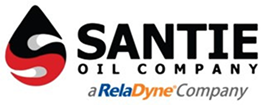Lubricants reduce friction, facilitate cooling, and provide protection for the mechanical aspects of machinery. Military oil specifications require the fluid to perform under extreme conditions. Let's look at some critical properties of a lubrication fluid with military specifications.
1. Flash Point
The flashpoint is the minimum temperature that a lubricant will remain fluid before it turns to vapor. However, at the flashpoint, it should ignite but must not continue to burn.
The military oil specification for aviation oils sets the flashpoint at a minimum of 60 degrees. Below that temperature, you can transport or store it without any significant risks of contamination.
2. The Lubricant’s Viscosity
89% of one survey’s respondents indicated that they consider the viscosity of the lubricant. Viscosity is the measure of a fluid’s resistance to flow. It increases with the rise in pressure, and it will decrease with high temperatures.
Military oil specifications are essential for the newer models of airplane turbines. Manufacturers are demanding more reliable fluids that can handle the high pressure and temperatures of modern engines.
3. Monograde and Multigrade Oils
Castrol lubricants have a wide range of single and multigrade oils you can use for different applications. Monograde oils have one grade of viscosity designed to work in warmer climates. But their most significant shortcoming is that they do not provide the necessary flow in cold weather.
For that reason, some engineers opt for multigrade oils. They offer the required viscosity regardless of the season. Multigrade fluids can also cut consumption and enhance performance. However, there is still no consensus on whether it is better than monograde oils.
4. Synthetic Oils
Synthetic oils differ from products made through petroleum refinement in that their manufacturer is through chemical synthesis. Chemical synthesis can produce uniform molecules with better performance for friction, oxidation, or viscosity.
Synthetic lubricants are usually more expensive than mineral oils derived from petroleum. They often work for a single project and are therefore not suitable for general purpose applications. Careful analysis of the application is essential to find the most effective specialized fluids for a project.
5. Additives and Dispersants
After petroleum refinement, additives can give fluids additional properties to improve their performance. Military oil specifications require the lubricant to be anti-corrosion and to tolerate high temperatures. Additives can make lubricants more viscous and corrosion-resistant, amongst other properties.
An ash-less dispersant is an additive that limits the accumulation of deposits. These oil solutions stop the formation of sludge, which could cause clogs for the fluid passageway. They do not contain metal and can contribute to the formation of sediments.
Monitoring and Maintenance
Regardless of the lubricants you choose, it should match the manufacturer’s requirements. It is critical to monitor the oil change intervals to ensure optimal performance throughout the seasons. During monitoring and maintenance, the analysis can inform future upgrades for better performance.
Machine oil specification lubricants are durable and specialized for heavy-duty projects. Understanding the different grades of lubricants and a careful analysis of their application can help reduce corrosion and defects in the assembly. For more information and to make wholesale purchases of military-specific lubricants, including specialty lubricants, contact Santie Oil Company today.

